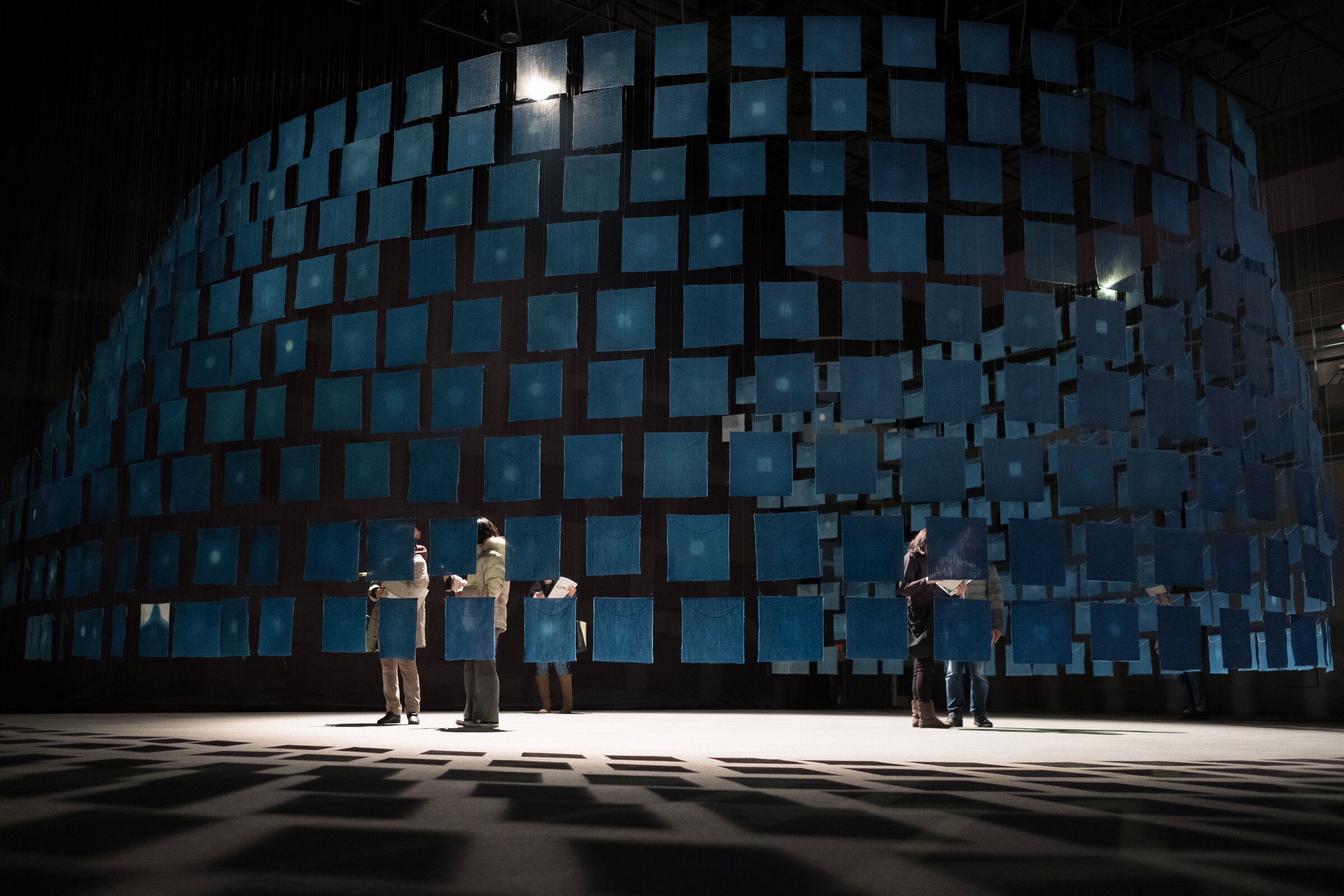
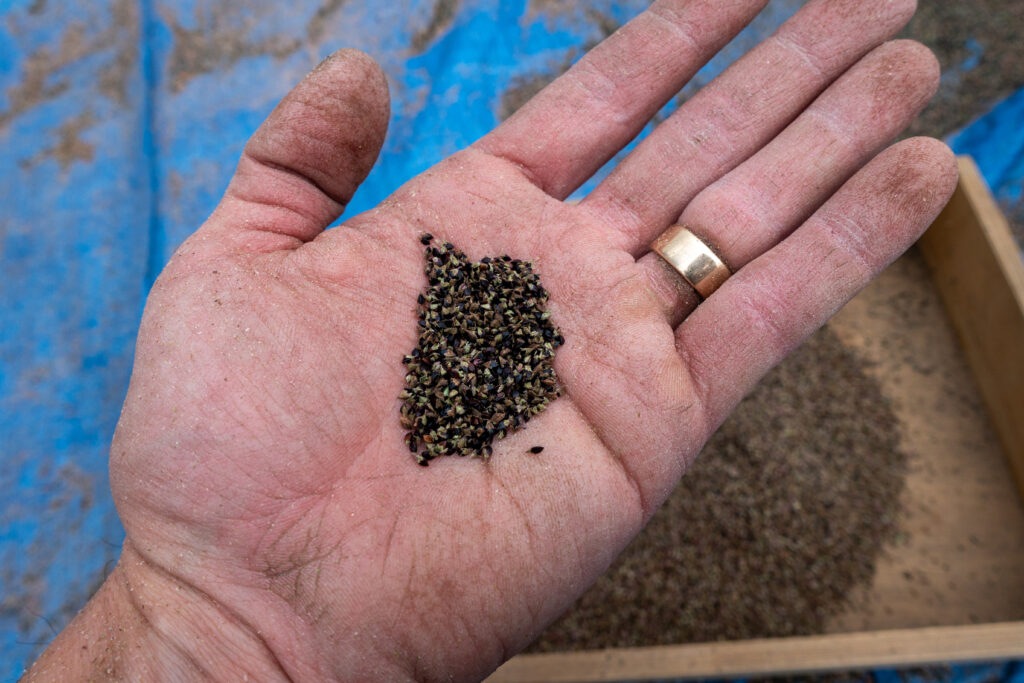
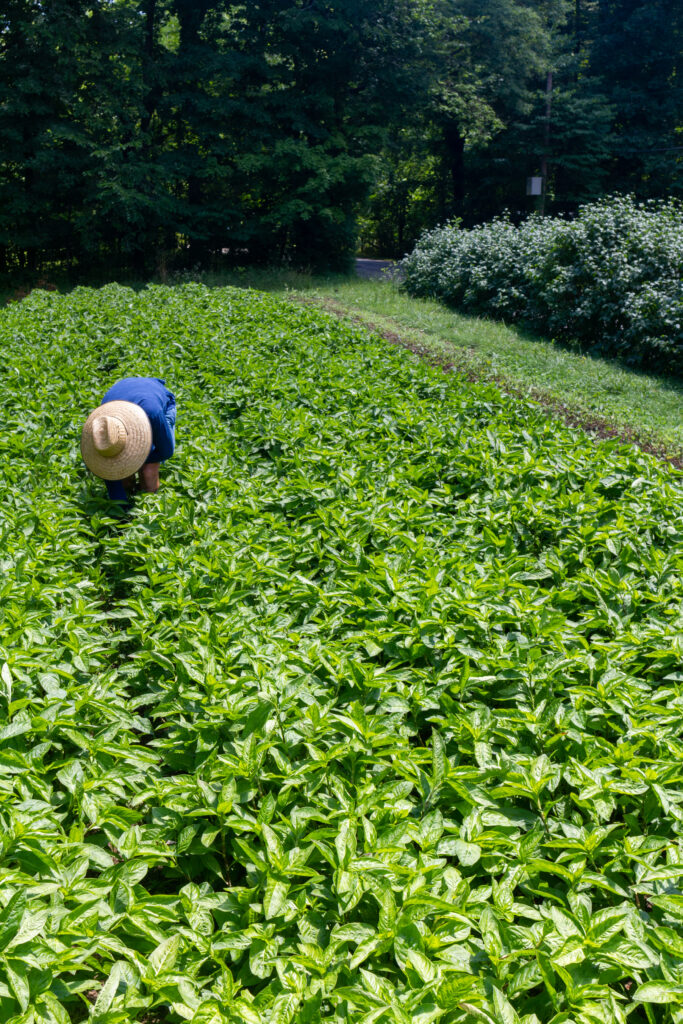
Photo by Rowland Ricketts 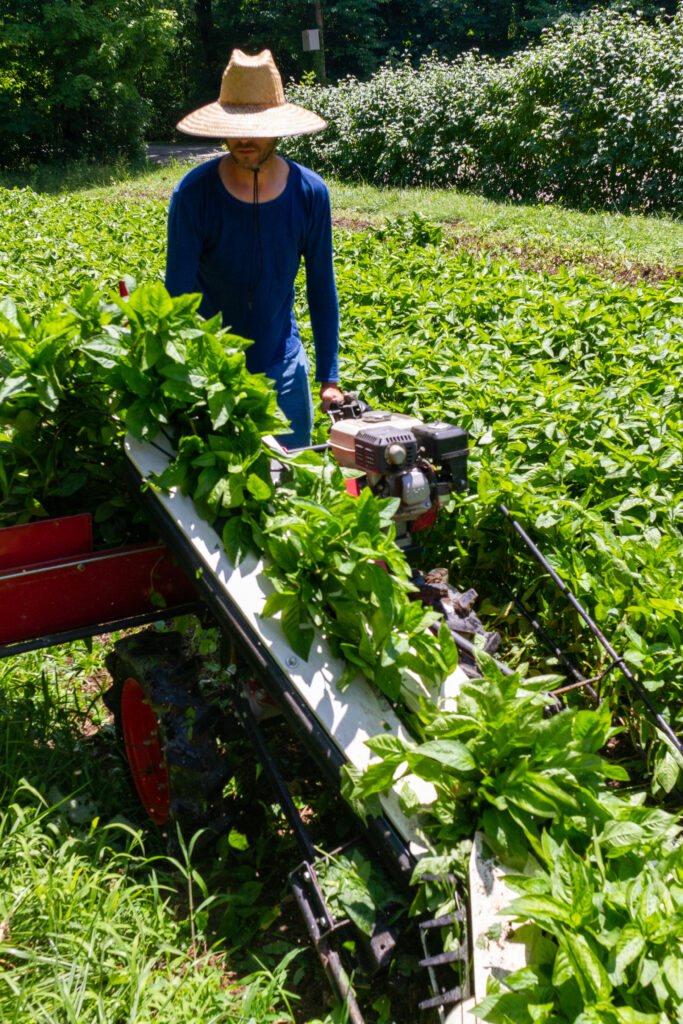
Photo by Rowland Ricketts
Seed to seed, in the early spring, Rowland Ricketts plants and sows his future works of art into the soil. In the Midwestern state of Indiana, he is growing an ocean. A landlocked ocean, an inverse island, a pool of potential blue. The indigo seeds (Persicaria tinctorium) for which he is known are the beginning of his work. Ricketts is an artist, farmer, and educator. In the vat of his practice, these three ingredients swirl together to offer one origin of blue.
Ricketts offers a simple answer to the question “Where does blue come from?” He grows his own. But nothing about growing indigo is simple. It involves deep knowledge and immense care. The type of care that asks us to come second while caring for another life. In this case, it’s the life of the indigo vat – the bacteria, their sustenance, and their environment.
To see Ricketts’ work is to see a seed. His life work is embodied by textile installations, the growing and dyeing of indigo, and legacy sharing. Parallel, the life work of a seed is embodied in the minimalist outline of a husk, cotyledon, and embryo. In the billowing swaths of woven, dyed cloth, seemingly groundless in their blue luminosity, Ricketts feels his seeds, earth, and labor. Season after season, the work of Ricketts and the work of a seed reach ends and open to new beginnings. Both are the result of a patient, ecologically entangled process tied cyclically to the landscape. And both are beginnings for the next season, the next flower, the next installation.
Ricketts’ practice at first seems straightforward. He and his partner Chinami grow indigo. They harvest it. They dry it. They compost it. They vat it. They dye with it. And they begin again the next season with the next seed. That seed is not simple. That small, ridged dot (a pointy spheroid) that can be pinched between a forefinger and thumb holds a world of potential.
The seed and the vat are the core moments of excitement for Ricketts. There is a vast openness in what can happen when all options are available. Several paths are possible – a plant could deviate from the expected flower and Ricketts could, too, from one installation design to another. Motivation grows from these moments of potential before decisions are concretized. When all-that-can-happen can still happen.
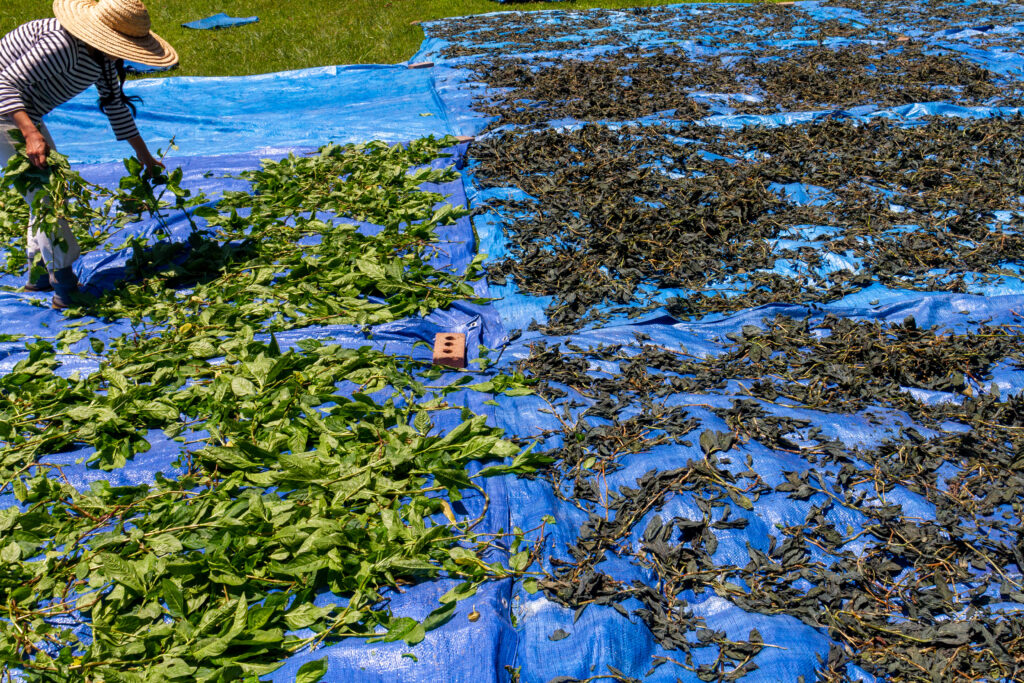
Photo by Rowland Ricketts 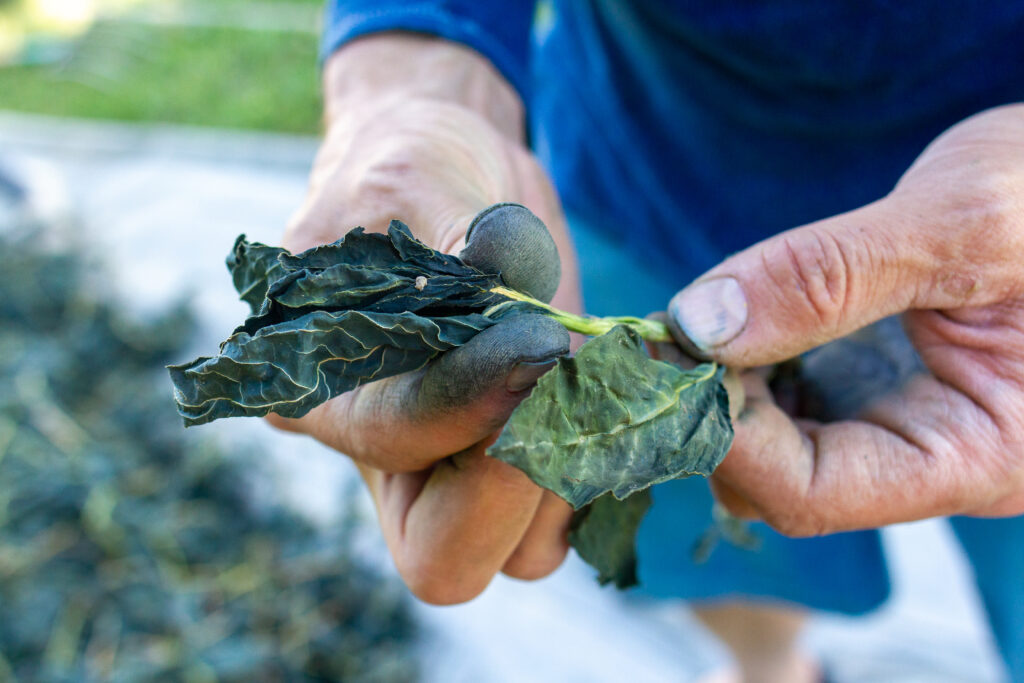
Photo by Rowland Ricketts 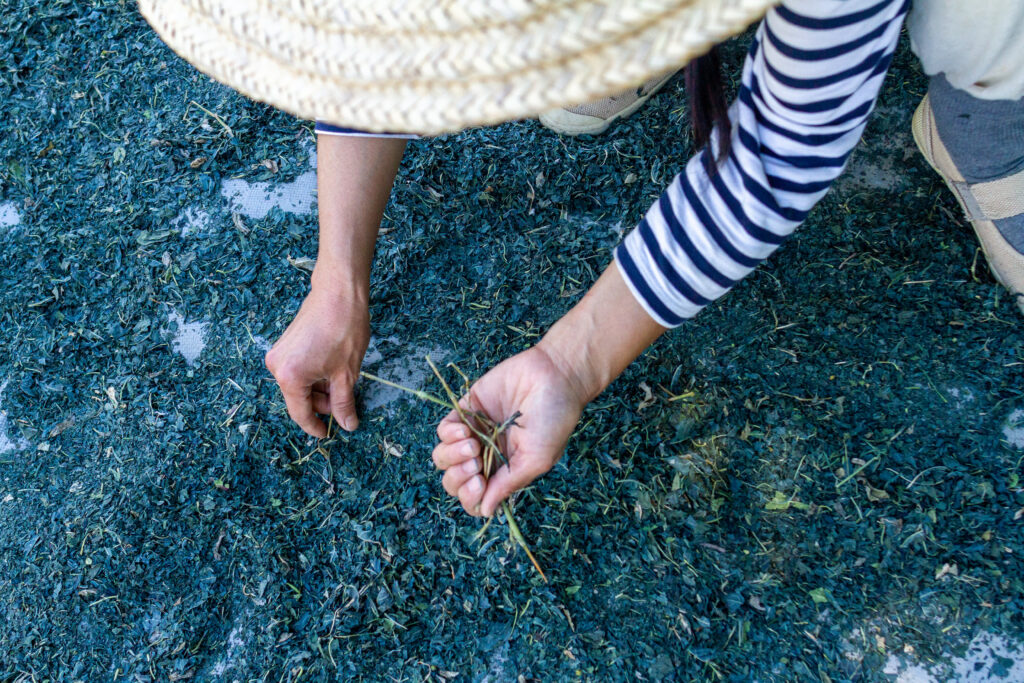
Photo by Rowland Ricketts
In the billowing swaths of woven, dyed cloth, seemingly groundless in their blue luminosity, Ricketts feels his seeds, earth, and labor.
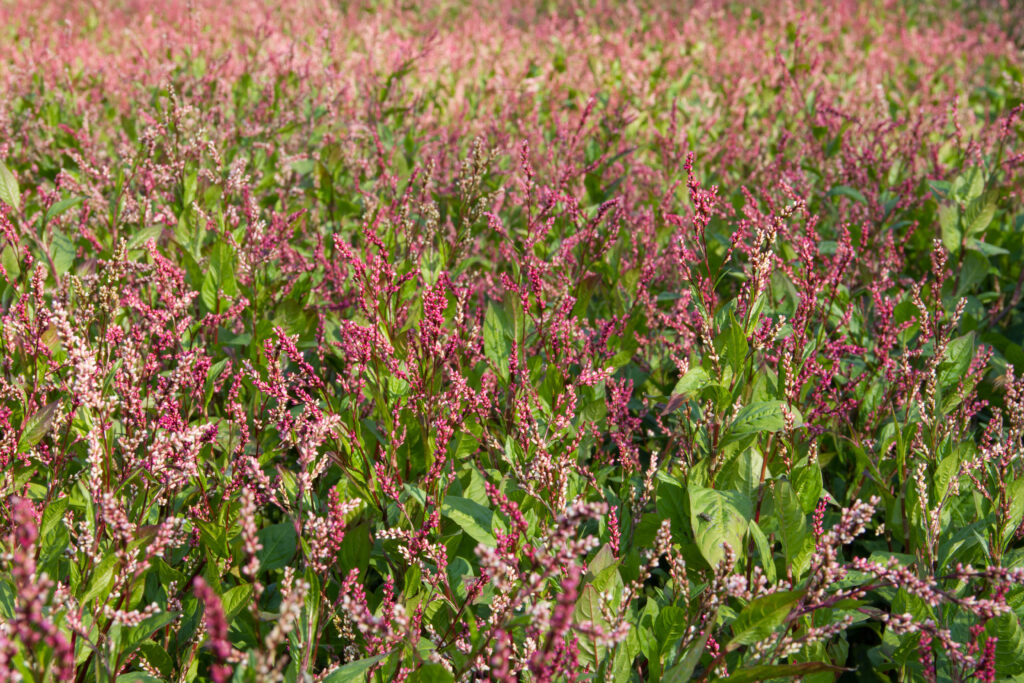
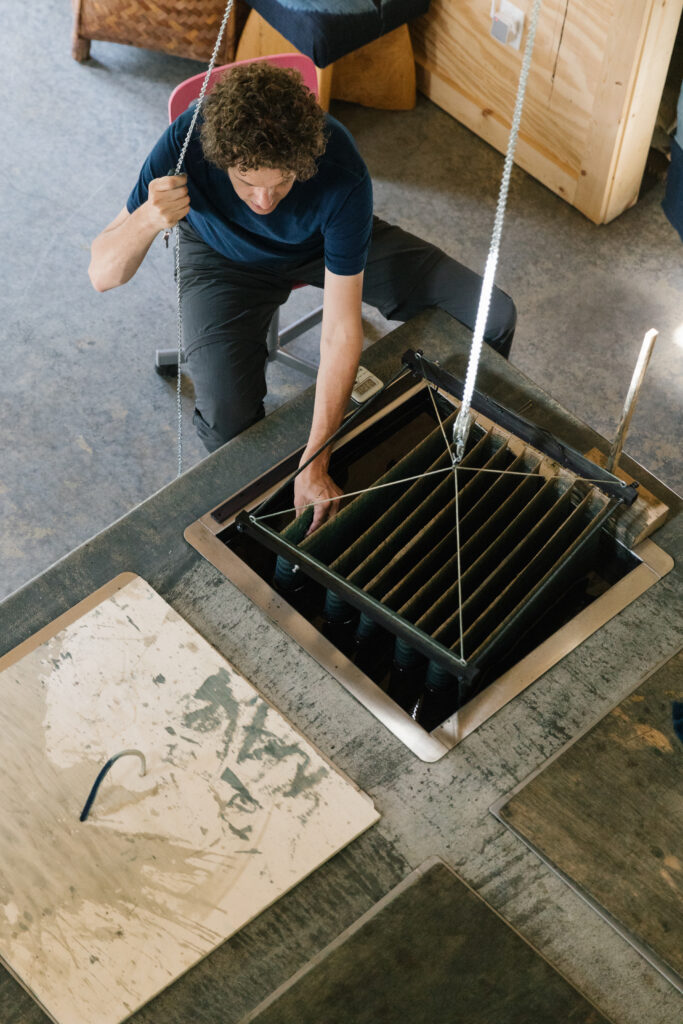
After months of work and coordination with the climate’s compassion, the small seeds reach their own enlightenment. Pink flowers bloom in radial symmetry amidst unassuming green leaves. The seed’s potential is not emptied, however. Now begins the second life – the second blossoming – in the form of blue sculpture. While flowers go to seed for the next year’s indigo, the leaves are gathered as ingredients for Ricketts’ meticulous recipe for blue.
At first, the leaves follow that seemingly straightforward path: they are dried, composted, and fermented. Once prepared properly, the vat becomes charged with potential again. This time it’s not a living flower that could emerge, but instead a living color – blue. What will come from this alchemical solution? What fibers will it dye, and what will those fibers create in Ricketts’ hands? The vat offers not just one blue but many. With each dip, the color dives deeper into the abyss, like blue of the ocean or the sky, like bathymetry indicating the deepest point with the darkest blue.
The process of growing indigo is not separate from the germination of the next installation. The shades of blue vary from year to year, as the growing conditions intersect with the experiment of the season. The work is sensitive to the weather. An early frost, a drought, a temperature fluctuation – myriad calamities alter the possibilities available from one process to the next. These interdependencies are reminders that our actions, care for our environments, and material origins matter. Where does blue come from? A happy, healthy, cared-for field within a happy, healthy, cared-for world.
Motivation grows from these moments of potential before decisions are concretized. When all-that-can-happen can still happen.



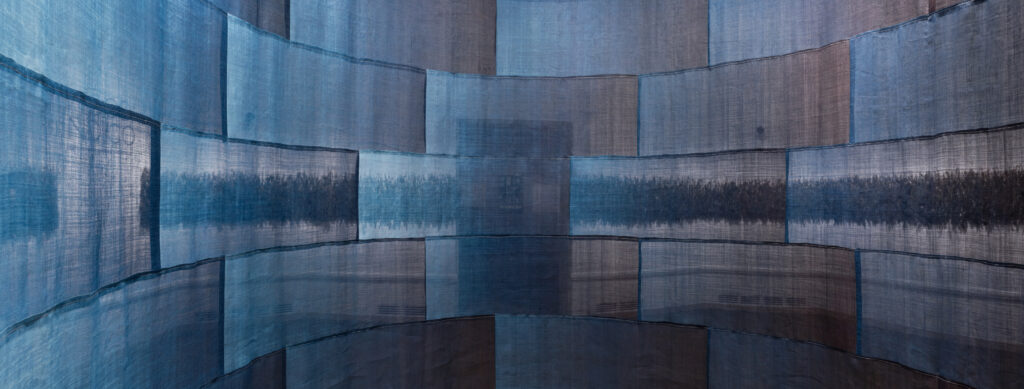
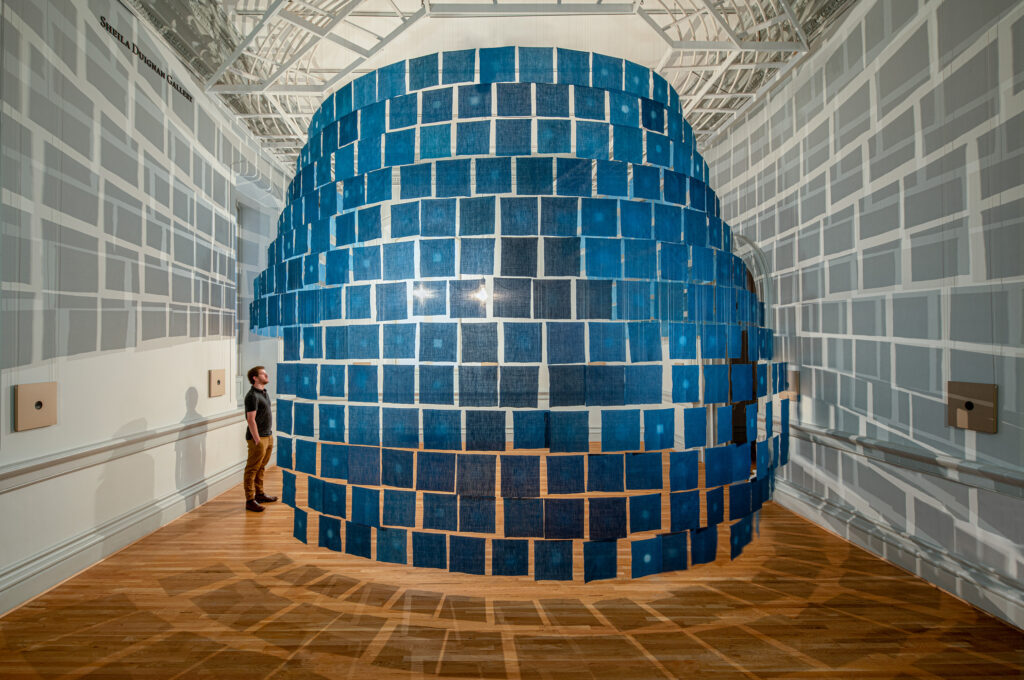
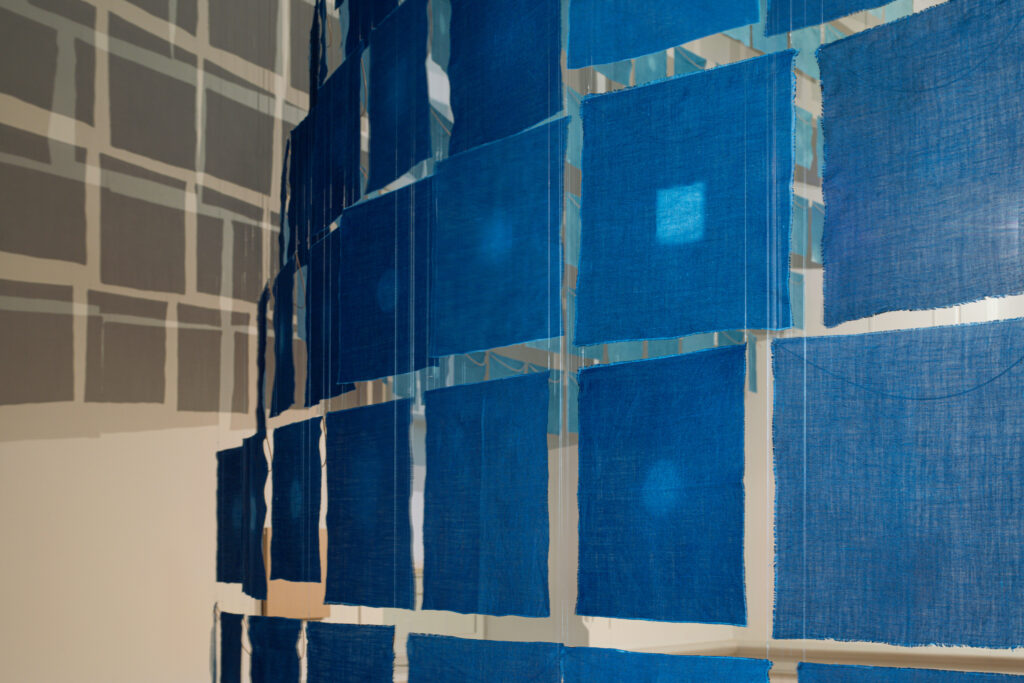
The practice of working with indigo is part of a long history. The ancient seeds of knowledge for working with this plant must be thoughtfully collected, preserved, and passed on. Ricketts is both pollinator and flower. He perennially invites his students to join the cultivation process, transferring knowledge, like pollen, from one person to another. It is a long process which requires commitment and dictates his when and whereabouts. Once the labor is performed, and the knowledge shared, the artist blossoms with his indigo and with his sculpture.
Being part of something that crosses space and time boundaries is a profound experience. And, like climbing a mountain or swimming in the ocean, the legacy and lineage of indigo traditions are so vast that they return the body and ego to their proper proportion. Beyond widespread, horizontal rhizomes, Ricketts offers us a taproot, something deeper: blue is much larger than we can ever be.
Once the labor is performed, and the knowledge shared, the artist blossoms with his indigo and with his sculpture.
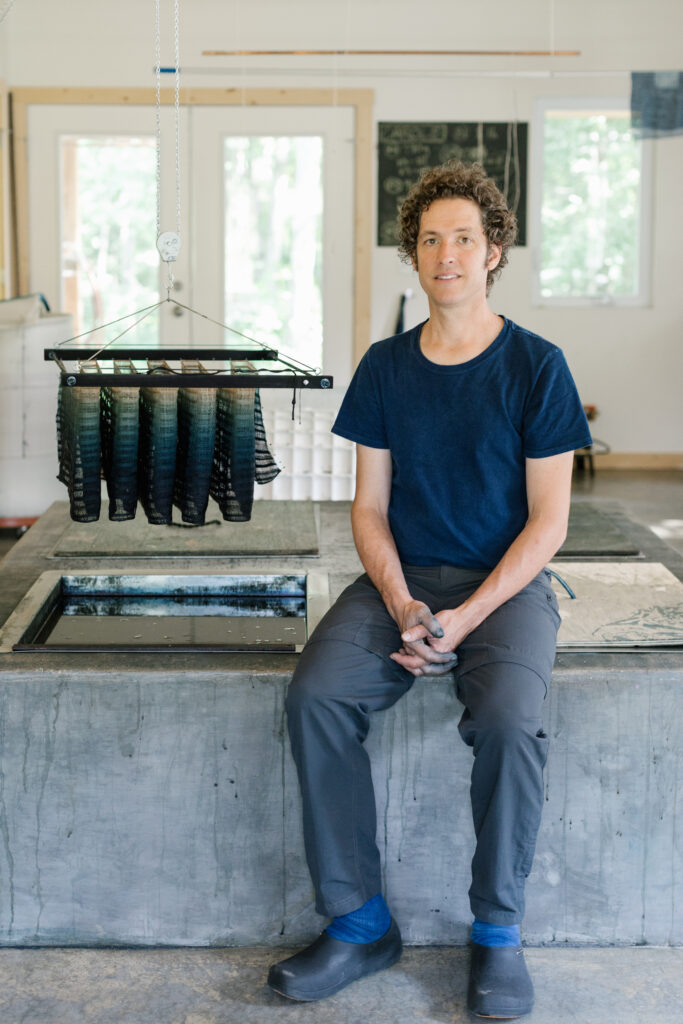
Rowland Ricketts utilizes natural dyes and historical processes to create contemporary textiles that span art and design. Trained in indigo farming and dyeing in Japan, Rowland received his MFA from Cranbrook Academy of Art in 2005 and is currently a Professor and Associate Dean in Indiana University’s Eskenazi School of Art, Architecture + Design. His work has been exhibited at the Textile Museum in Washington, DC, the Museum of Fine Arts Boston, the Seattle Asian Art Museum, and the Smithsonian American Art Museum Renwick Gallery. Rowland is a recipient of a United States Artists Fellowship.
To learn more about the work of Rowland Ricketts visit rickettsindigo.com / @rickettsindigo
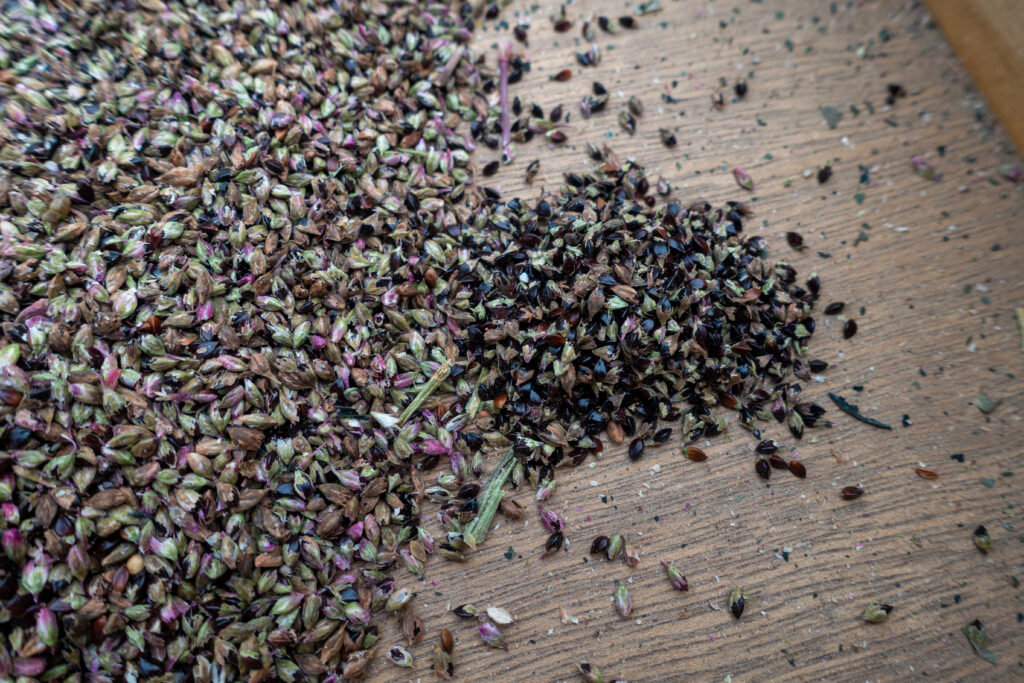



Left photo by Rowland Ricketts
Top right photo by Anen Ricketts
Bottom right photo by Ron Blunt
